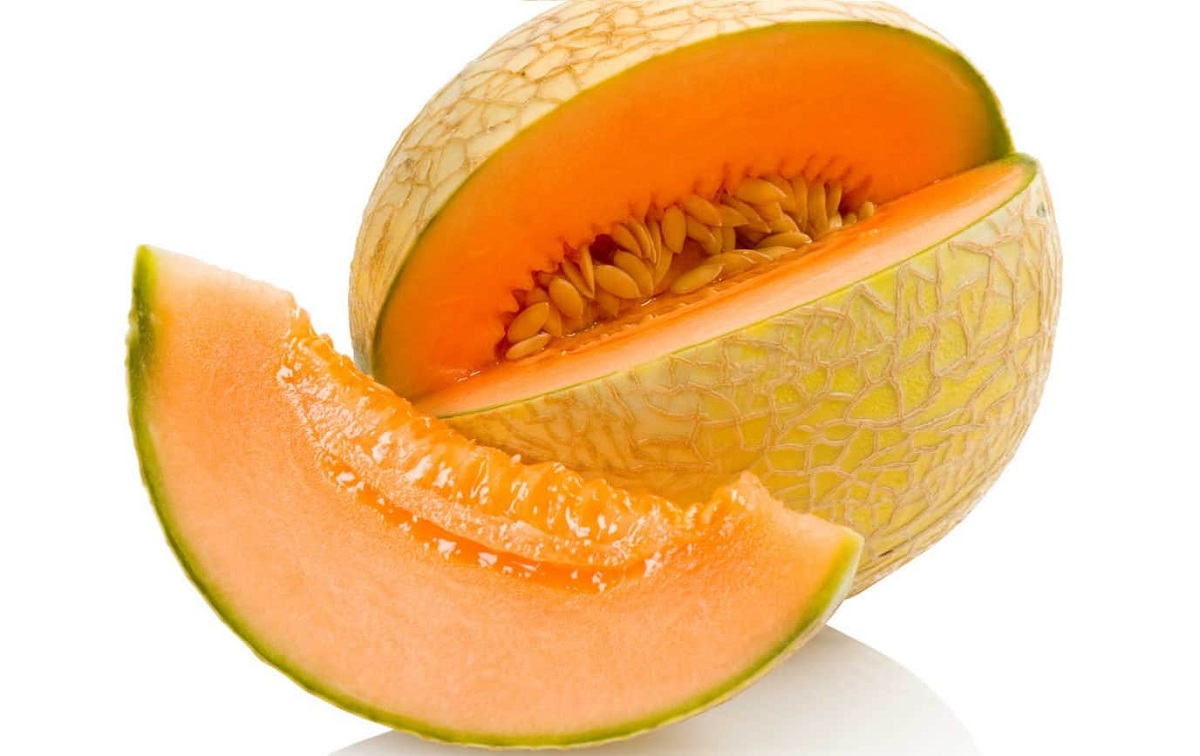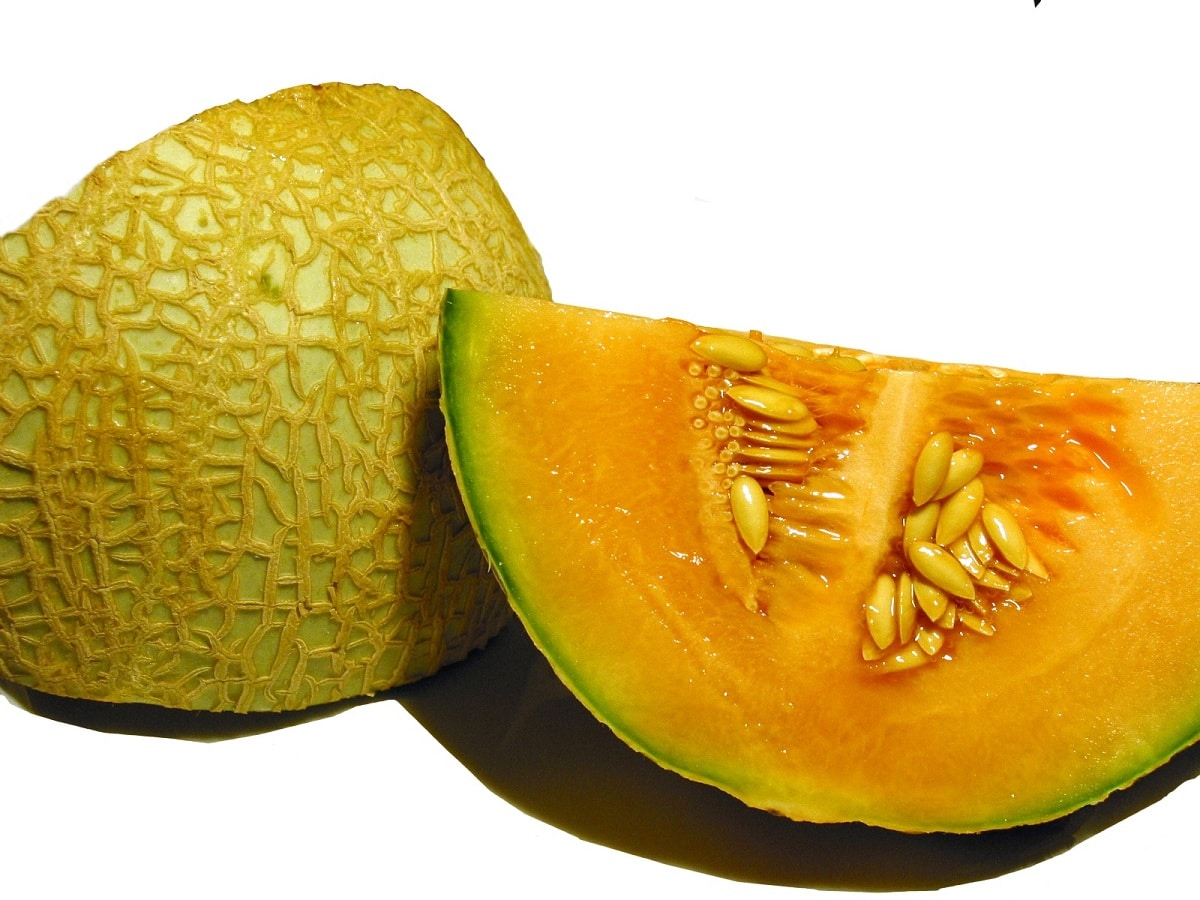
Today we are going to talk about a type of melon variety that is known to have a large amount of beta-carotene, vitamin A and a good antioxidant action. Its about cantaloupe melon. It is one of the fruits that was already known in Roman and building times and its scientific name is Cucumis melo cantalupensis. Currently the largest producer of this variety in the world is France and, therefore, it is also known by the name of French melon.
In this article we are going to tell you all the characteristics, properties and how to grow the cantaloupe melon.
Key features

The cantaloupe melon is different from the rest of other species of melons in both shape and color. It has a spherical shape and has a greenish-yellow color that makes it very characteristic. Its size is somewhat smaller than the usual melon. Usually, it has a weight that ranges between 700 grams and 1500 grams. Its skin is also considerably thinner than the melon of the most common species. One of the distinctive characteristics apart from its round appearance is that it has longitudinal stripes on the skin that go from the base of the fruit to the peduncle.
To be able to recognize with the naked eye if this species of melon that is in good condition we must pay attention to the fact that the longitudinal lines are thick and rough. If we see that the skin is very soft and smooth, it is not an indication that it is in good condition inside. We must pay attention to these aspects unless we want to buy only half of the medium. The flesh of the cantaloupe melon has an orange color similar to that of the pumpkin. It also has a characteristic aroma that differs from other melons.
The best season to buy higher quality cantaloupe melons is between the months of June and August, although you can really buy it all year round. This specific time is suggested since the melon manages to develop a particularly sweet flavor, which is what characterizes it. Some aspects of your skin, such as the yellow color, may lead you to think that it is at its optimum point of maturation. But this is not so. One of the indications that makes us know that the cantaloupe melon is at its maximum maturity is its aroma. The smell that it gives off when opened should be soft and sweet.
Cantaloupe melon properties

We are going to describe some of the beneficial properties that this melon has for our body. The cantaloupe melon is especially sweet but it does not have a higher carbohydrate content. It has an important antioxidant effect since it has a high content of vitamins A and C. This makes it a very interesting option for people who tend to breathe easily and those athletes who practice sports regularly.
Keep in mind that 80% of the composition of this melon is completely water. Therefore, it has almost negligible calories, although a large part of them are due to the moderate content of simple sugars it has. One of the aspects that cantaloupe melons stand out from other varieties is for having a high beta-carotene content. It is a precursor of vitamin A that has an antioxidant action and is responsible for the orange color of guilt. Beta-carotene is also found in large amounts in carrots. This vitamin is an essential nutrient for vision and maintenance of tissues and hair. If we ingest large amounts of beta-carotene, it is our body that is in charge of transforming it into vitamin A as we need it in the daily requirements. On the other hand, it also stands out for having a high content of vitamin C. We see that this type of vitamin A has a good antioxidant action. Another of the nutrients that the cantaloupe melon has that They are interesting for the proper functioning of the body are minerals such as potassium and magnesium.
Cantaloupe melon in recipes

For many people, this melon is more than a dessert. And it can be used in the preparation of numerous recipes not only as a dessert, but as the main ingredient in ice creams, smoothies and even salads. It has a very pleasant taste and a smooth texture that makes it adaptable to many foods. It gives dishes a sweet flavor and a tropical touch. An example of a contrast between flavor is melon like ham. The contrast of the salty ham with the sweetness of the melon is a quite interesting mix from a gastronomic point of view.
It can be used to make some salads from which the cantaloupe melon is combined with some different types of lettuce, avocado, watermelon, pineapple, peppers and cucumber with which a very appetizing and nutrient-rich dish is achieved. One of the uses for which this fruit can be used is in the preparation of gazpacho. In this case, by combining the melon in a traditional dish, the name of gazpacho de melon is modified. In order to make this gazpacho, some typical foods are mixed, such as onion and pepper, and other newer ones such as watermelon, orange juice, lime, good cantaloupe melon, as in this case.
Farming
We are going to see what are the main guidelines to follow for the cultivation of cantaloupe melons. Some climatic factors that we must take into account is that it is a plant for warm climates but not excessively humid. This means that in humid regions and with little insolation its development is negatively affected. The temperature varies depending on the phases of development. It can withstand a minimum of 8 degrees and a maximum of 30 degrees. Regarding humidity, the relative humidity should be 65-75% during the flowering season and a little lower during the fruiting season.
It is a plant that requires that the duration of the luminosity depend on the temperature. Long days and high temperatures favor the formation of male flowers while the opposite induces the development of flowers with ovaries. Finally, it is not very demanding in terms of soil but it still gives good results in those rich in organic matter, deep, well drained and with good aeration.
I hope that with this information you can learn more about the cantaloupe melon and its characteristics.